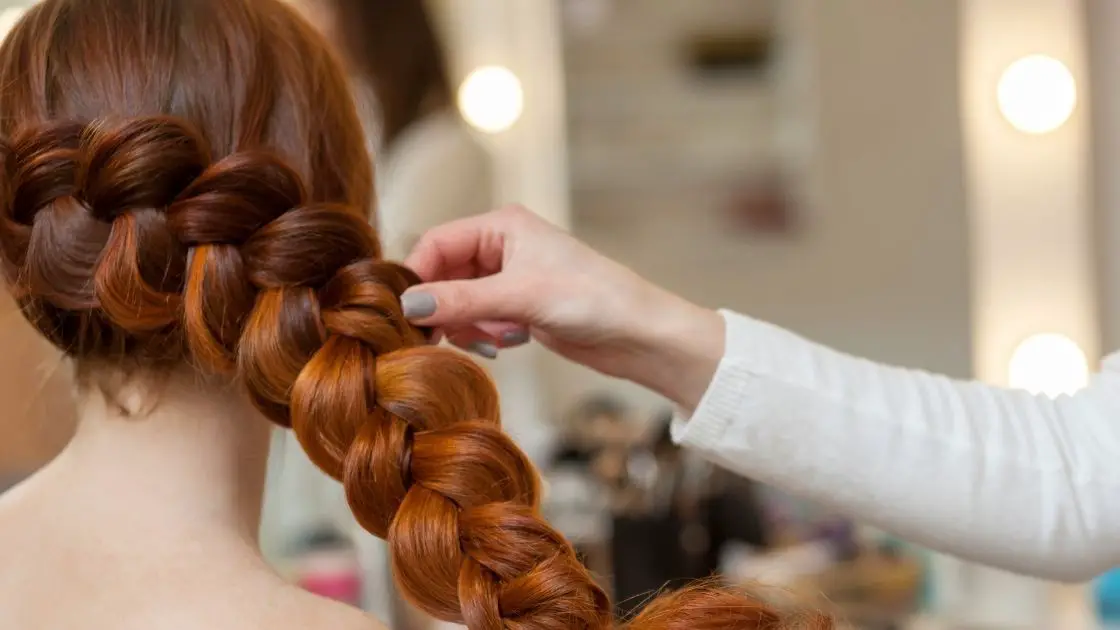We can style our hair with all kinds of methods, but not every method is right for everyone. Every hair type is different and certain methods can potentially harm or actually help the overall health of our hair. So, here’s everything you need to know about what happens when you braid wet hair.
What Happens When You Braid Wet Hair
Often used to create beach waves, braiding hair while still damp and letting it sit overnight is common practice for some people. However, braiding wet hair has its disadvantages. When the hair is wet, individual strands swell with water and this is why freshly showered hair shafts seem more like brittle threads than your regular hair.
In addition, wet hair creates a heavy braid, and the pressure put on your head while sleeping doesn’t allow it to properly dry throughout the scalp, creating potential mildew, all while risking breakage because of the hair’s fragile state.
Is it Safe to Braid Wet Hair
Overall, it is not safe to braid wet hair. Essentially, braid it at your own risk. Wet hair is much longer in its damp state than dry hair due to the water absorbed by the scale-like outer surface of the hair shafts or strands. That outer surface is called the cuticle and is made up of overlapping cells between which moisture can cling, thus making the hair heavier and stretching it. When this happens, the cells of the cuticle lift up and the hair shaft stretches.
So, here’s why your hair can feel brittle due to being wet: When damp, the cuticle cells swell, lift up and expose the underlayer of the hair shaft, the cortex, allowing it to dry out and be weakened. This lifting of the cells, while having the hair all tied up can result in frizzing, split ends, or, in the worst case, having the hair shaft rip away from the scalp. When the hair is semi-dry, you can still braid it loosely, as it can still breathe, but styling right out of the shower is definitely not “safe.”
Is it Best to Braid Your Hair Wet or Dry?

Your safest bet when braiding, is to braid when the hair is dry. If your hair is prone to tangling, chances are your hair will tangle the most after taking it out of a wet braid. Also, if you’ve previously suffered from chemical, over manipulation, or heat damage, dry hair is definitely your friend. Not only is dry hair easier to manipulate because you aren’t trying to gather up and wrap fragile wet strands, but you’re braiding when the hair is in its strongest state.
In fact, braiding while dry also allows for an overall more pleasant feeling. Imagine…you braid your hair wet and just minutes later, you can feel the leftover water pooling on your scalp…not a pleasant feeling. In addition, if you’re going to braid your hair for curls, dry hair will give you a longer-lasting and bouncier curl.
Braiding Wet Hair for Curls
Typically, braiding wet hair specifically for braids can be tricky and it depends on the hair type. Some people who braid hair when it’s wet for curling purposes and sleep overnight in it find that the results are lackluster. However, letting wet hair with a slight natural curl sit throughout the day is much better. Specifically, for those with a natural curl, braiding while damp can improve the shape.
Braiding on dry hair for curling purposes can be done, but it’s more difficult to section off. Since this method of styling would specifically be for curls, you could actually stretch the hair before braiding in order to avoid a perm. By stretching, you’ll give the curls more length and a softer look. Simply apply a styling foam or lotion to the hair beforehand and then braid.
Will Braiding Wet Hair Make it Wavy

Easily one of the most well known wavy hair “tricks,” braiding wet hair for loose waves has been around for ages, but once again, it doesn’t necessarily work for everyone. Those with medium-density hair with medium to long length will see the most difference, whereas those with thicker hair who cannot take much more weight and those with thin hair that can easily break will most likely experience some extreme frizziness, breakage, and pain on the scalp.
However, you can be sure that if you have the right hair type, this method is definitely for you and safe. You can also always use a sea salt spray in the morning, for a less water-involved style.
Can You Make Box Braids on Wet Hair
Box braids are usually installed on dry hair rather than wet. When installing, you can spritz water on the braids to relieve potential dryness, but otherwise, there shouldn’t be another trace of water beforehand. Since box braids are tighter than most other variations and have a longer lifetime, leftover water in the hair can easily create bacteria buildup. Instead, it’s always recommended to put the hair under a hooded dryer or let it air dry for box braids. Additionally, you can also apply a moisturizer when the hair is still damp, but this still fits into the dry styling category.
Conclusion
In conclusion, braiding wet hair has its positives and negatives, but it always depends on the hair type and desired style more than anything. Know that whatever you choose, there will always be a risk of breakage when handling wet hair but ultimately, the dryer the hair, the safer you’ll be.


